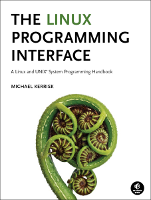/* scm_rights_send.c
Used in conjunction with scm_rights_recv.c to demonstrate passing of
file descriptors via a UNIX domain socket.
This program sends a file descriptor to a UNIX domain socket.
Usage is as shown in the usageErr() call below.
File descriptors can be exchanged over stream or datagram sockets. This
program uses stream sockets by default; the "-d" command-line option
specifies that datagram sockets should be used instead.
This program is Linux-specific.
See also scm_multi_recv.c.
*/
#include "scm_rights.h"
int
main(int argc, char *argv[])
{
/* Allocate a char array of suitable size to hold the ancillary data.
However, since this buffer is in reality a 'struct cmsghdr', use a
union to ensure that it is aligned as required for that structure.
Alternatively, we could allocate the buffer using malloc(), which
returns a buffer that satisfies the strictest alignment requirements
of any type. */
union {
char buf[CMSG_SPACE(sizeof(int))];
/* Space to hold an 'int' (a file descriptor) */
struct cmsghdr align;
} controlMsg;
/* Parse command-line options. */
bool useDatagramSocket = false;
bool verbose = false;
int opt;
while ((opt = getopt(argc, argv, "dv")) != -1) {
switch (opt) {
case 'd':
useDatagramSocket = true;
break;
case 'v':
verbose = true;
break;
default:
usageErr("%s [options] file\n"
" Options:\n"
"\t-d Use datagram socket (default is stream)\n",
argv[0]);
}
}
/* 'optind' is a global variable that is updated by getopt(). Upon
completion of option processing, it contains the index of the next word
in the command line following the options and option arguments. */
if (argc != optind + 1)
usageErr("%s [-d] file\n", argv[0]);
/* Open the file named on the command line. */
int fd = open(argv[optind], O_RDONLY);
if (fd == -1)
errExit("open");
/* The 'msg_name' field can be used to specify the address of the
destination socket when sending a datagram. However, we do not need to
use this field because we use connect() below, which sets a default
outgoing address for datagrams. */
struct msghdr msgh;
msgh.msg_name = NULL;
msgh.msg_namelen = 0;
/* We must transmit at least 1 byte of real data in order to send ancillary
data. */
struct iovec iov;
int data = 12345;
iov.iov_base = &data;
iov.iov_len = sizeof(data);
msgh.msg_iov = &iov;
msgh.msg_iovlen = 1;
if (verbose)
printf("Sending data = %d\n", data);
/* Set 'msgh' fields to describe the ancillary data buffer. */
msgh.msg_control = controlMsg.buf;
msgh.msg_controllen = sizeof(controlMsg.buf);
/* The control message buffer must be zero-initialized in order for the
CMSG_NXTHDR() macro to work correctly. Although we don't need to use
CMSG_NXTHDR() in this example (because there is only one block of
ancillary data), we show this step to demonstrate best practice. */
memset(controlMsg.buf, 0, sizeof(controlMsg.buf));
/* Set message header to describe the ancillary data that we want to
send. */
struct cmsghdr *cmsgp = CMSG_FIRSTHDR(&msgh);
cmsgp->cmsg_len = CMSG_LEN(sizeof(int));
cmsgp->cmsg_level = SOL_SOCKET;
cmsgp->cmsg_type = SCM_RIGHTS;
memcpy(CMSG_DATA(cmsgp), &fd, sizeof(int));
/* Connect to the peer socket. */
int sfd = unixConnect(SOCK_PATH,
useDatagramSocket ? SOCK_DGRAM : SOCK_STREAM);
if (sfd == -1)
errExit("unixConnect");
printf("Sending FD %d\n", fd);
/* Send real plus ancillary data. */
ssize_t ns = sendmsg(sfd, &msgh, 0);
if (ns == -1)
errExit("sendmsg");
if (verbose)
printf("sendmsg() returned %zd\n", ns);
/* Once the file descriptor has been sent, it is no longer necessary to
keep it open in the sending process. */
if (close(fd) == -1)
errExit("close");
exit(EXIT_SUCCESS);
}
